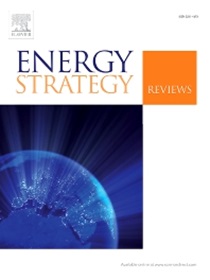南非能源格局的转型:第四次工业革命中的政策影响、机遇和技术创新
IF 7.9
2区 工程技术
Q1 ENERGY & FUELS
引用次数: 0
摘要
在可及性、环境可持续性和现代化的挑战下,南非的能源部门正在经历一场关键的转型。本研究批判性地审视了国家的能源格局,重点关注政策影响、可再生能源的采用以及第四次工业革命(4IR)技术对该行业的重塑。我们进行了系统的审查,分析了500多份同行评审的出版物、政府报告和行业数据。从这些来源中,根据其相关性和经验数据选择了200多个。该审查旨在确定趋势、研究差距和支持向可持续能源解决方案过渡的证据。调查结果显示,中国严重依赖煤炭,占发电量的77%,而可再生能源仅占12%。2021年,南非的发电量为24.5万千瓦时,但燃煤电厂仍然是二氧化碳、二氧化硫和汞排放的重要来源,这凸显了向清洁能源过渡的紧迫性。可再生能源独立发电商采购计划(REIPPPP)吸引了超过200亿美元的投资,目标是到2030年整合17.8吉瓦的可再生能源。目前的装机容量包括2500兆瓦的太阳能光伏和3670兆瓦的风能,在综合资源计划(IRP)的指导下,预计到2030年可再生能源的比例将达到40%。尽管取得了进展,但农村电气化差距仍然存在,需要包容性能源解决方案。主要建议包括加强监管框架以加速可再生能源的采用,通过分散的系统解决能源贫困问题,以及促进基础设施发展的公私伙伴关系。智能电网和分散式能源系统等第四次工业革命技术为实现可持续能源目标提供了变革性途径。这些战略干预措施对于减少碳排放和确保南非拥有一个包容、可持续的能源未来至关重要。本文章由计算机程序翻译,如有差异,请以英文原文为准。
Transformation of South Africa's energy landscape: Policy implications, opportunities, and technological innovations in the Fourth Industrial Revolution
South Africa's energy sector is undergoing a critical transformation amid challenges of accessibility, environmental sustainability, and modernization. This study critically examines the nation's energy landscape, focusing on policy implications, renewable energy adoption, and Fourth Industrial Revolution (4IR) technologies reshaping the sector. A systematic review was conducted, analyzing over 500 peer-reviewed publications, government reports, and industry data. From these sources, more than 200 were selected based on their relevance and empirical data. The review aimed to identify trends, research gaps, and evidence supporting the transition to sustainable energy solutions. Findings reveal a heavy reliance on coal, accounting for 77 % of electricity generation, while renewable energy contributes only 12 %. In 2021, South Africa generated 245,000 GWh of electricity, but coal-fired power plants remain significant sources of carbon dioxide, sulfur dioxide, and mercury emissions, underscoring the urgency of transitioning to cleaner energy. The Renewable Energy Independent Power Producer Procurement Programme (REIPPPP) has attracted over $20 billion in investments, aiming to integrate 17.8 GW of renewable energy by 2030. Current capacities include 2500 MW of solar PV and 3670 MW of wind energy, with projections targeting 40 % renewable energy by 2030, guided by the Integrated Resource Plan (IRP). Despite progress, rural electrification disparities persist, necessitating inclusive energy solutions. Key recommendations include strengthening regulatory frameworks to accelerate renewable energy adoption, addressing energy poverty through decentralized systems, and fostering public-private partnerships for infrastructure development. 4IR technologies, such as smart grids and decentralized energy systems, offer transformative pathways for achieving sustainable energy goals. These strategic interventions are essential for reducing carbon emissions and ensuring an inclusive, sustainable energy future for South Africa.
求助全文
通过发布文献求助,成功后即可免费获取论文全文。
去求助
来源期刊

Energy Strategy Reviews
Energy-Energy (miscellaneous)
CiteScore
12.80
自引率
4.90%
发文量
167
审稿时长
40 weeks
期刊介绍:
Energy Strategy Reviews is a gold open access journal that provides authoritative content on strategic decision-making and vision-sharing related to society''s energy needs.
Energy Strategy Reviews publishes:
• Analyses
• Methodologies
• Case Studies
• Reviews
And by invitation:
• Report Reviews
• Viewpoints
 求助内容:
求助内容: 应助结果提醒方式:
应助结果提醒方式:


